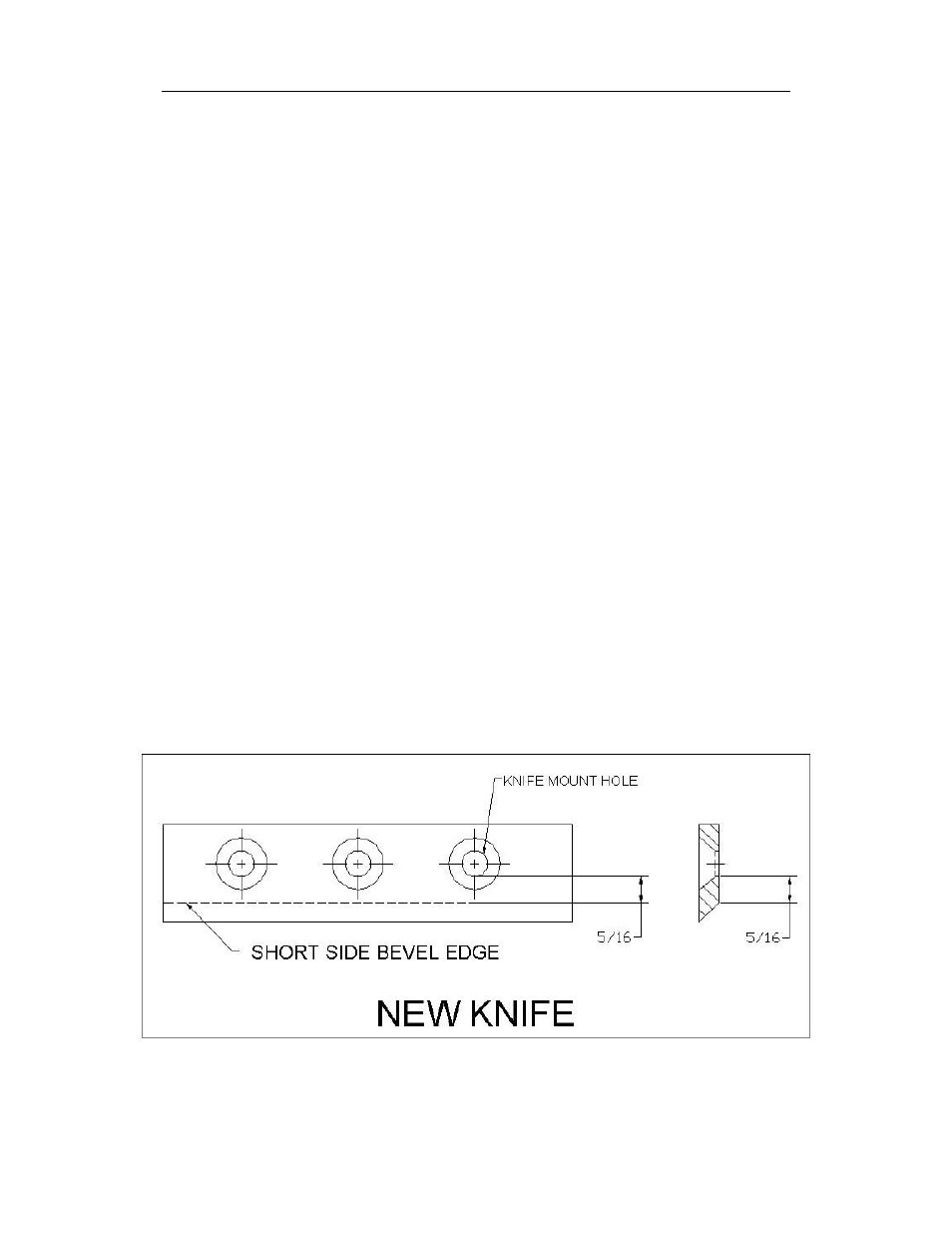DR Power 3-Point Hitch Top-Discharge User Manual
Page 18

18
REMOVAL, SHARPENING AND RE-INSTALLATION OF CHIPPER KNIFE
HOW TO REMOVE THE KNIFE
• Stop the tractor and disengage the P.T.O. shaft.
• Wait for all moving parts to come to a complete stop.
• Disconnect P.T.O. shaft from tractor.
• Remove both access covers from the chipper basic machine.
• Rotate the chipper disk until the three countersunk screws and nylock nuts attaching the
knife to the flywheel are visible through the access doors.
• Clean out the heads of the allen screws with an awl or sharp tool.
• Insert a 3/16” allen wrench into the heads of the screws.
• Use a ½” socket and ratchet to remove the nylock nuts from the screws.
• Remove all three allen screws and nuts in this manner.
KNIFE SHARPENING
• You should never attempt to sharpen the chipper knife freehand.
• The chipper knife should be taken to a machine shop for proper sharpening.
• It is extremely important that the 45 degree angle be maintained consistently for proper
performance.
• Excessive heat generated during the sharpening process will damage knives and weaken
the metal. Be sure the knife is not overheated.
KNIFE INFORMATION
• The chipper knife should be checked routinely for sharpness.
• Using a dull knife will decrease performance and cause excessive vibration that will
cause damage to the chipper.
• How many times a knife can be sharpened is determined by how much material needs to
be taken off to sharpen or to compensate for dents or gouges.
• A new chipper knife has 5/16” measurement between the short side bevel edge and the
knife mounting holes. See figure 2.
Figure 2
